Offering a land acknowledgment at the start of a gathering has become much more common in recent years. It’s one small way for non-Indigenous people who live on Turtle Island (what settlers call North America) to honour Indigenous peoples’ ties to the land and acknowledge their treaties and land rights.
The Native Governance Center offers a thoughtful step-by-step primer for creating an Indigenous land acknowledgement statement. The first step begins with self-reflection, and asking yourself: Why am I doing this land acknowledgment?
The authors weigh in on the possible answers: “If you’re hoping to inspire others to take action to support Indigenous communities, you’re on the right track. If you’re delivering a land acknowledgment out of guilt or because everyone else is doing it, more self-reflection is in order.”
They also emphasize the importance of not “sugarcoating” the language when it comes to describing acts of genocide and land theft. They remind settlers that colonialism isn’t just something in the past; it is alive and well today.
Kjipuktuk, Mi’kma’ki
The Atlantic Chapter of Sierra Club Canada Foundation is based in Kjipuktuk (pronounced Chebooktook), commonly referred to as Halifax. Kjipuktuk is a Mi’kmaw word meaning Great Harbour. Michael William McDonald, a Mi’kmaq of Sipekne’katik First Nations, describes how Great Harbour once had plenty of grey seals and even Atlantic walruses. The Mi’kmaq had complex social and political structures. They lived in clans comprised of families connected by kinship; several clans shared a territory, known as a district, which was governed by a district chief. Kjipuktuk was part of Sipekne’katik District, one of seven districts that formed Mi’kma’ki.
The Mi’kmaq were known to fiercely defend Kjipuktuk from European invaders. But European ships brought foreign diseases that killed hundreds of Mi’kmaq, leaving the clans less able to fight off European soldiers and settlers.
The Mi’kmaq never surrendered their territory to the British (or French). Rather, the Mi’kmaq and the governor of Nova Scotia signed the Treaty of 1752, a treaty of peace and friendship that guaranteed the Mi’kmaq’s rights to fish, hunt, and trade in perpetuity.
But the British Crown, and later the Canadian government, did not honour the Treaty of 1752. Instead, they forced the Mi’kmaq off their lands and consigned them to reserves, Residential schools, poverty, and jails. Modern-day colonialism and systemic racism against the Mi’kmaq of Kjipuktuk continue to this day.
Settler allies frequently refer to Kjipuktuk and Mi’kma’ki as the “unceded” territory of the Mi’kmaq. Chief Hugh Akagi of the Peskotomuhkati Nation points out that “unceded” is a nice word for “stolen.” He says, “While ‘unceded’ simply reinforces the notion of the noble Indian, the word ‘stolen’ exposes the theft—the crime and the criminal.”
The Atlantic Chapter of Sierra Club Canada Foundation is located on the stolen land of the Mi’kmaq.
Land Back
What are the implications of acknowledging the theft of Indigenous lands by Europeans hundreds of years ago? And what about the land theft still happening today by settler governments, multinational oil and gas corporations, mining corporations, and other extractive industries?
In this short video—Canada, it’s time for Land Back ⋆ The Breach—Dr. Pamela Palmater, a Mi’kmaw lawyer, professor and activist from Mi’kma’ki, New Brunswick, talks about the Land Back movement, focused on returning so-called Crown lands to Indigenous peoples’.
Helpful Land Acknowledgment Resources
Mi’kmaw Place Names Digital Atlas: an interactive map with place names throughout the part of Mi’kma’ki commonly known as Nova Scotia, created based on interviews with Mi’kmaw Elders.
Native Land Digital “strives to create and foster conversations about the history of colonialism, Indigenous ways of knowing, and settler-Indigenous relations, through educational resources such as our map and Territory Acknowledgement Guide.”
Enter a location on the map for information about the territory, treaty, and language, as well as additional resources to expand your learning. Native Land Digital also has an app and an Instagram page to help you expand your allyship and learning as you move through different Indigenous territories. You can find additional resources on their website.
Decolonizing Resources
Land acknowledgments alone will never be enough. They must be offered as part of an acknowledgment that past and present injustices and crimes against Indigenous peoples’ must be urgently addressed. Settlers are not taught in schools the truth about past and present-day colonialism. In fact, there is much that settlers need to unlearn when it comes to the myths and lies they learned about Indigenous peoples’ in Canadian history class. Reading these books will help.
Whose Land Is It Anyway: A Manual for Decolonization, available for free as a PDF
Unsettling Canada, by Arthur Manuel and Grand Chief Ronald Derrickson, also available as a PDF
The Reconciliation Manifesto, by Arthur Manuel and Grand Chief Ronald Derrickson
Braiding Sweetgrass, by Robin Wall Kimmerer




